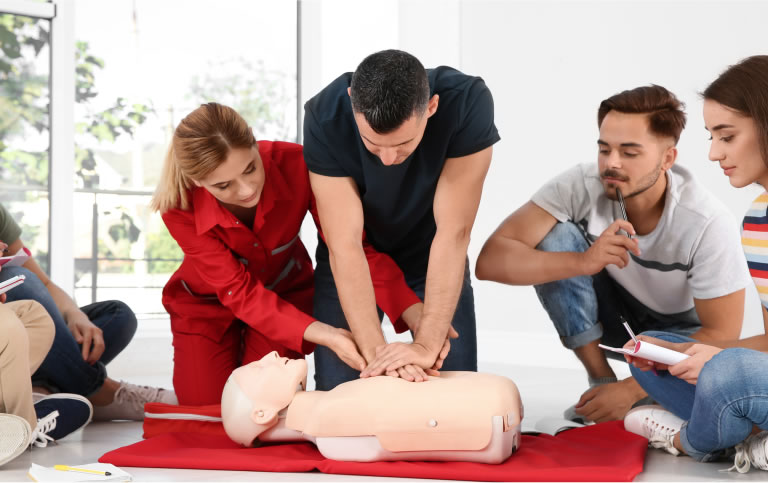What are Bloodborne Pathogens?
Bloodborne Pathogens (BBPs) are microorganisms and bacteria that are present in human blood or body fluids and can cause sickness and sometimes death.
The Hepatitis B virus, (HBV) Hepatitis C virus, and Human Immunodeficiency Virus (HIV) are all examples of BBPs.
Bloodborne pathogens may also be found in (also known as other potentially infectious materials; OPIM):
BBP Viruses
- blood
- semen
- vaginal secretions
- cerebrospinal fluid (brain)
- synovial fluid (joint)
- pleural fluid (lungs)
- pericardial fluid (heart)
- peritoneal fluid (abdomen/body cavity)
- amniotic fluid (uterine)
- saliva (in dental procedures)
- unfixed human tissue or organs
- any body fluids visibly contaminated with blood
- any body fluids that cannot be recognized

Human Immunodeficiency Virus (HIV):
The HIV virus weakens your immune system by attacking important, infection-fighting cells (T-cells). As the virus progresses, your body loses the ability to fight even the smallest of infections and diseases.
HIV can eventually lead to Acquired Immunodeficiency Syndrome (AIDS). According to the World Health Organization, more than 35 million people worldwide have died since AIDS was first recognized in 1981, and 1.6 million people died of HIV/AIDS in 2012.
Symptoms can include: fever, sore throat, rash, poor appetite, rapid weight loss, and swollen glands. Currently, there is no cure or vaccine for HIV or AIDS and avoiding exposure is the only known method of prevention.
Hepatitis B virus and Hepatitis C virus:
HBV and HCV are contagious liver diseases that can be acute or chronic (i.e., liver failure, liver cancer), and are primarily spread through contact with blood. You can have HBV or HCV and not know, as you may not show symptoms. Although there are vaccines to prevent HBV, one does not exist for HCV.
HBV and HCV symptoms include:
- Fever
- Fatigue
- Loss of appetite
- Nausea, vomiting, diarrhea
- Abdominal pain
- Dark urine
- Clay-colored bowel movements
- Joint pain
- Jaundice (yellow color in the skin or eyes.
For more information and statistics on these bloodborne pathogens visit the CDC Web site.


